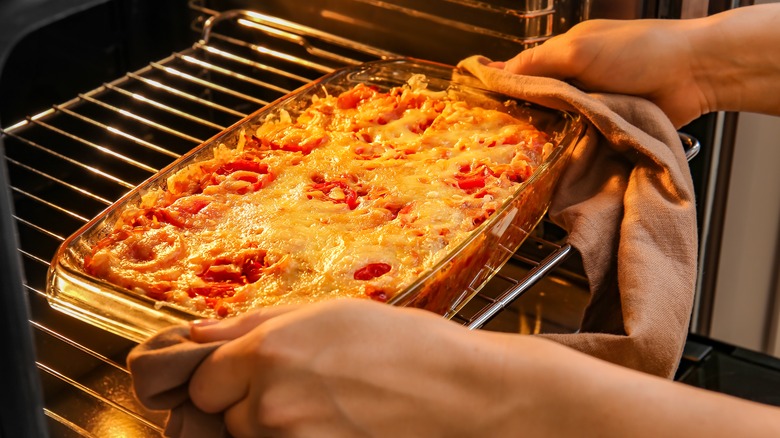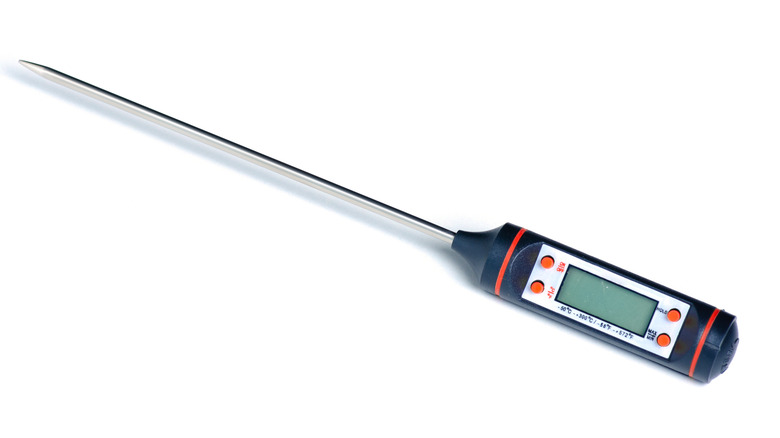The Best Way To Tell When A Casserole Is Done Cooking
Casseroles are a lifesaver on a busy school night packed with extracurricular activities. These make ahead, pop it in the oven, single pan dishes just make life a little easier. What makes a casserole a casserole? The wonderful thing about this meal, beyond its convenience, of course, is the variety of ingredients you can throw together to create it. MasterClass explains that a casserole is best described as a one-pan dish baked in the oven. But that clearly encompasses a wider swath of recipes and means almost any dish can fall into this culinary category. Casseroles are dishes like lasagna, mac and cheese, chicken enchiladas, or a homemade cheesy hash browns casserole baked to perfection. They are easy to love.
The Pioneer Woman notes that these simple meals are a crowd pleaser and recommends that when you are raiding your pantry to throw one together, you usually want to find "a protein, a starch, a vegetable, a sauce (or another binding ingredient), and cheese." The site also shares a pan philosophy, explaining that tin pans work great for baking while glass pans take longer to heat, making them perfect for a crustless dish. But with the casserole world being a little bit of a wild west regarding directions, how do you tell when your casserole is done cooking?
Use the trusty food thermometer
Making certain your casserole has fully baked is key to both your health and your enjoyment of this meal. According to The Pioneer Woman, when trying to discern when your casserole is ready to come out of the oven, it will be dependent on the temperature of the food prior to when it went into the oven. Drummond uses the classic pot pie casserole as an example, pointing out that because the gravy and vegetable filling is already hot, this will influence the cooking time.
However, when it comes to knowing definitively that your casserole is done, Kitchen Seer states there is really only one way: A food thermometer. You will need to ensure the internal temperature is at a minimum of 165 degrees F. If you don't have a thermometer, it may be time to invest in one. The cooking site also suggests taking note of your casserole's appearance. Things to look for include whether the top has browned and crisped, if the sauce is "bubbling," and if the liquid has significantly decreased. If you still see a lot of liquid, Kitchen Seer suggests raising your oven's temperature by a few degrees to help it dissipate a little quicker.

